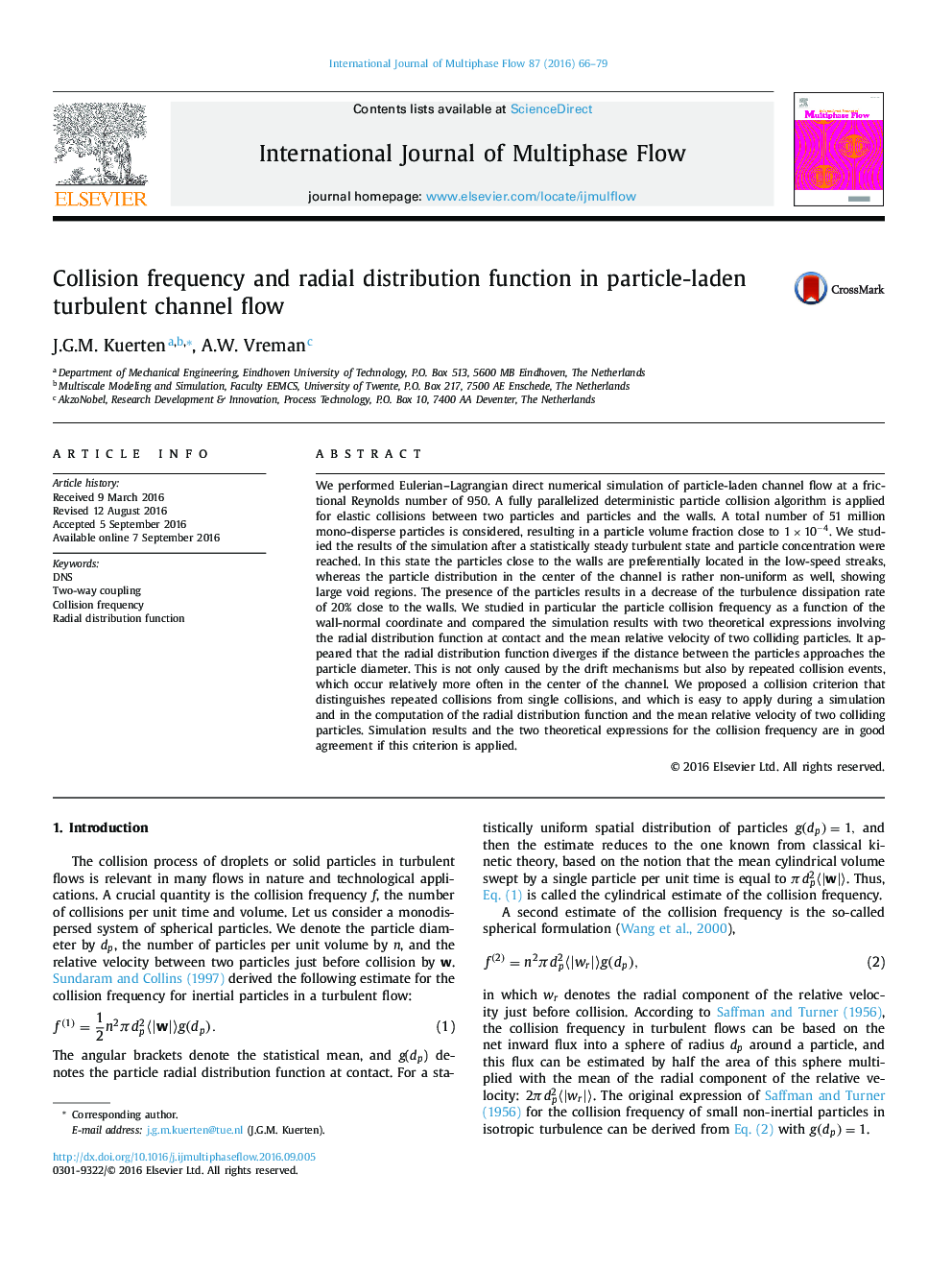| کد مقاله | کد نشریه | سال انتشار | مقاله انگلیسی | نسخه تمام متن |
|---|---|---|---|---|
| 4995064 | 1458491 | 2016 | 14 صفحه PDF | دانلود رایگان |
عنوان انگلیسی مقاله ISI
Collision frequency and radial distribution function in particle-laden turbulent channel flow
ترجمه فارسی عنوان
فرکانس برخورد و عملکرد توزیع شعاعی در جریان کانال آشفته ذرات
دانلود مقاله + سفارش ترجمه
دانلود مقاله ISI انگلیسی
رایگان برای ایرانیان
کلمات کلیدی
موضوعات مرتبط
مهندسی و علوم پایه
مهندسی شیمی
جریان سیال و فرایندهای انتقال
چکیده انگلیسی
We performed Eulerian-Lagrangian direct numerical simulation of particle-laden channel flow at a frictional Reynolds number of 950. A fully parallelized deterministic particle collision algorithm is applied for elastic collisions between two particles and particles and the walls. A total number of 51 million mono-disperse particles is considered, resulting in a particle volume fraction close to 1Ã10â4. We studied the results of the simulation after a statistically steady turbulent state and particle concentration were reached. In this state the particles close to the walls are preferentially located in the low-speed streaks, whereas the particle distribution in the center of the channel is rather non-uniform as well, showing large void regions. The presence of the particles results in a decrease of the turbulence dissipation rate of 20% close to the walls. We studied in particular the particle collision frequency as a function of the wall-normal coordinate and compared the simulation results with two theoretical expressions involving the radial distribution function at contact and the mean relative velocity of two colliding particles. It appeared that the radial distribution function diverges if the distance between the particles approaches the particle diameter. This is not only caused by the drift mechanisms but also by repeated collision events, which occur relatively more often in the center of the channel. We proposed a collision criterion that distinguishes repeated collisions from single collisions, and which is easy to apply during a simulation and in the computation of the radial distribution function and the mean relative velocity of two colliding particles. Simulation results and the two theoretical expressions for the collision frequency are in good agreement if this criterion is applied.
ناشر
Database: Elsevier - ScienceDirect (ساینس دایرکت)
Journal: International Journal of Multiphase Flow - Volume 87, December 2016, Pages 66-79
Journal: International Journal of Multiphase Flow - Volume 87, December 2016, Pages 66-79
نویسندگان
J.G.M. Kuerten, A.W. Vreman,
